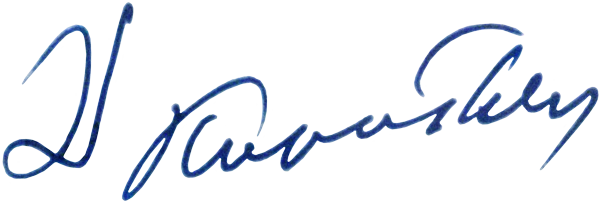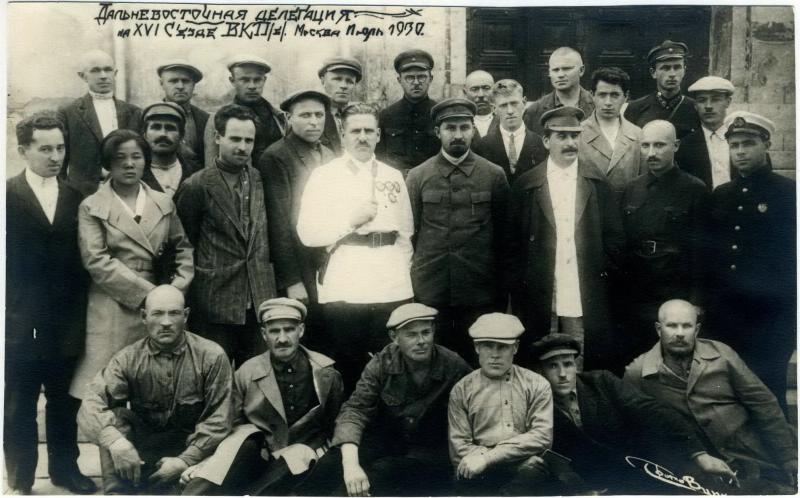|
Demian Korotchenko
Demyan Serhiyovych Korotchenko ( uk, Дем’ян Сергійович Коротченко; 29 November 1894 – 7 April 1969) was a Ukrainian and Soviet politician, who twice served as the head of government of the Ukrainian SSR (the equivalent of today's prime-minister).Урядовий портал :: Керівники урядів Української Радянської Соціалістичної Республіки Kmu.gov.ua. Retrieved on 2012-08-09. Biography Demyan Korotchenko was born in to a |
List Of Prime Ministers Of Ukraine
The prime minister of Ukraine ( uk, Прем'єр-міністр України, ) is Ukraine's head of government presiding over the Cabinet of Ministers of Ukraine, which is the highest body of the executive branch of the Ukrainian government. Since Ukrainian independence from the Soviet Union in 1991, there have been 16 prime ministers (19 counting acting PMs). Unlike the president of Ukraine, who is directly elected by popular vote every five years, the prime minister is appointed by the president upon the ratification of the candidate by the parliament, the Verkhovna Rada. Denys Shmyhal is the current prime minister of Ukraine since 4 March 2020. Originally appeared as a parliamentary republic without a head of state, in 1918 there was introduced a post of head of state in form of dictatorship. For a very short period there existed a collective head of state (Directory) which soon was phased away. During the Soviet period, a post of head of state was in a shadow of the Co ... [...More Info...] [...Related Items...] OR: [Wikipedia] [Google] [Baidu] |
Russian Empire
The Russian Empire was an empire and the final period of the Russian monarchy from 1721 to 1917, ruling across large parts of Eurasia. It succeeded the Tsardom of Russia following the Treaty of Nystad, which ended the Great Northern War. The rise of the Russian Empire coincided with the decline of neighbouring rival powers: the Swedish Empire, the Polish–Lithuanian Commonwealth, Qajar Iran, the Ottoman Empire, and Qing China. It also held colonies in North America between 1799 and 1867. Covering an area of approximately , it remains the third-largest empire in history, surpassed only by the British Empire and the Mongol Empire; it ruled over a population of 125.6 million people per the 1897 Russian census, which was the only census carried out during the entire imperial period. Owing to its geographic extent across three continents at its peak, it featured great ethnic, linguistic, religious, and economic diversity. From the 10th–17th centuries, the land ... [...More Info...] [...Related Items...] OR: [Wikipedia] [Google] [Baidu] |
Western Oblast
Western Oblast (russian: Западная область, ''Zapadnaya oblast'') was an ''oblast'' (a first-level administrative and municipal unit) of the Russian Soviet Federative Socialist Republic from 1929 to 1937. Its seat was in the city of Smolensk. The oblast was located in the west of European Russia, and its territory is currently divided between Bryansk, Kaluga, Pskov, Smolensk, and Tver Oblasts. By the 1937 All-Union Census, the population of the oblast was 4,693,495 persons. It was abolished on 27 September 1937. History The oblast was established on 1 October 1929 by the All-Russian Central Executive Committee. The territory of the oblast was formed from Smolensk and Bryansk Governorates, parts of Moscow, Kaluga, and Tver Governorates, as well as Velikiye Luki Okrug of Leningrad Oblast. The oblast was subdivided into eight administrative districts (''okrugs''), *Bryansk Okrug (with the seat located in Bryansk); *Klintsy Okrug (Klintsy); *Roslavl Okrug (Roslavl); ... [...More Info...] [...Related Items...] OR: [Wikipedia] [Google] [Baidu] |
Great Purge
The Great Purge or the Great Terror (russian: Большой террор), also known as the Year of '37 (russian: 37-й год, translit=Tridtsat sedmoi god, label=none) and the Yezhovshchina ('period of Nikolay Yezhov, Yezhov'), was General Secretary of the Communist Party of the Soviet Union, Soviet General Secretary Joseph Stalin's campaign to solidify his power over the party and the state; the Purge, purges were also designed to remove the remaining influence of Leon Trotsky as well as other prominent political rivals within the party. It occurred from August 1936 to March 1938. Following the Death and state funeral of Vladimir Lenin, death of Vladimir Lenin in 1924 a power vacuum opened in the Communist Party of the Soviet Union, Communist Party. Various established figures in Lenin's government attempted to succeed him. Joseph Stalin, the party's General Secretary, outmaneuvered political opponents and ultimately gained control of the Communist Party by 1928. Initially ... [...More Info...] [...Related Items...] OR: [Wikipedia] [Google] [Baidu] |
Lazar Kaganovich
Lazar Moiseyevich Kaganovich, also Kahanovich (russian: Ла́зарь Моисе́евич Кагано́вич, Lázar' Moiséyevich Kaganóvich; – 25 July 1991), was a Soviet politician and administrator, and one of the main associates of Joseph Stalin. He was one of several associates who helped Stalin to seize power, demonstrating exceptional brutality towards those deemed threats to Stalin's regime and facilitating the executions of thousands of people. Born to Jewish parents in modern Ukraine (then part of the Russian Empire) in 1893, Kaganovich was the son of Moisei Benovich Kaganovich (1863-1923) and Genya Iosifovna Dubinskaya (1860-1933). Of the 13 children born to the family, 6 died in infancy. Lazar had four elder brothers, all of whom became members of the Bolshevik party. Several of Lazar's brothers ended up occupying positions of varying significance in the Soviet government. Mikhail Kaganovich (1888–1941) served as People's Commissar of Defence Industry bef ... [...More Info...] [...Related Items...] OR: [Wikipedia] [Google] [Baidu] |
Red Army
The Workers' and Peasants' Red Army (Russian: Рабо́че-крестья́нская Кра́сная армия),) often shortened to the Red Army, was the army and air force of the Russian Soviet Federative Socialist Republic and, after 1922, the Union of Soviet Socialist Republics. The army was established in January 1918. The Bolsheviks raised an army to oppose the military confederations (especially the various groups collectively known as the White Army) of their adversaries during the Russian Civil War. Starting in February 1946, the Red Army, along with the Soviet Navy, embodied the main component of the Soviet Armed Forces; taking the official name of "Soviet Army", until its dissolution in 1991. The Red Army provided the largest land force in the Allied victory in the European theatre of World War II, and its invasion of Manchuria assisted the unconditional surrender of Imperial Japan. During operations on the Eastern Front, it accounted for 75–80% of casual ... [...More Info...] [...Related Items...] OR: [Wikipedia] [Google] [Baidu] |
Eastern Ukraine
Eastern Ukraine or east Ukraine ( uk, Східна Україна, Skhidna Ukrayina; russian: Восточная Украина, Vostochnaya Ukraina) is primarily the territory of Ukraine east of the Dnipro (or Dnieper) river, particularly Kharkiv, Luhansk and Donetsk oblasts (provinces). Dnipropetrovsk and Zaporizhzhia oblasts are often also regarded as "eastern Ukraine". In regard to traditional territories, the area encompasses portions of the southern Sloboda Ukraine, Donbas, the western Azov Littoral (Pryazovia). Almost a third of the country's population lives in the region, which includes several cities with population of around a million. Within Ukraine, the region is the most highly urbanized, particularly portions of central Kharkiv Oblast, south-western Luhansk Oblast, central, northern and eastern areas of Donetsk Oblast. Geography The region stretches from southern areas of the Central Russian Upland to the northern shores of the Sea of Azov, from the eastern borde ... [...More Info...] [...Related Items...] OR: [Wikipedia] [Google] [Baidu] |
Sumska Oblast
Sumy Oblast ( uk, Сумська́ о́бласть, translit=Sumska oblast; also referred to as Sumshchyna – uk, Су́мщина) is an oblast (province) in the northeastern part of Ukraine. Population: The oblast was created in its most recent form, from the merging of raions from Kharkiv Oblast, Chernihiv Oblast, and Poltava Oblast in 1939 by the Presidium of the Supreme Soviet of the Soviet Union. The administrative center of the oblast is the city of Sumy. Other important cities within the oblast include Konotop, Okhtyrka, Romny, and Shostka. The oblast has a heavy mix of agriculture and industry, with over 600 industrial locations. Importantly, seven rivers pass through the oblast. Geography The Sumy Oblast is situated in the northeastern part of Ukraine. It is situated on a border of two historical regions of Ukraine — Cossack Hetmanate (annexed by Russia in the 18th century as Little Russia, previously known as Severia) and Sloboda Ukraine. Elevation is 110� ... [...More Info...] [...Related Items...] OR: [Wikipedia] [Google] [Baidu] |
Peasant
A peasant is a pre-industrial agricultural laborer or a farmer with limited land-ownership, especially one living in the Middle Ages under feudalism and paying rent, tax, fees, or services to a landlord. In Europe, three classes of peasants existed: slave, serf, and free tenant. Peasants might hold title to land either in fee simple or by any of several forms of land tenure, among them socage, quit-rent, leasehold, and copyhold. In some contexts, "peasant" has a pejorative meaning, even when referring to farm laborers. As early as in 13th-century Germany, the concept of "peasant" could imply "rustic" as well as "robber", as the English term villain/villein. In 21st-century English, the word "peasant" can mean "an ignorant, rude, or unsophisticated person". The word rose to renewed popularity in the 1940s–1960s as a collective term, often referring to rural populations of developing countries in general, as the "semantic successor to 'native', incorporating all its conde ... [...More Info...] [...Related Items...] OR: [Wikipedia] [Google] [Baidu] |
Prime Minister Of Ukraine
The prime minister of Ukraine ( uk, Прем'єр-міністр України, ) is the head of government of Ukraine. The prime minister presides over the Cabinet of Ministers of Ukraine, which is the highest body of the executive branch of the Ukrainian government. The position replaced the Soviet post of chairman of the Council of Ministers of the Ukrainian SSR, which was established on March 25, 1946. Since Ukrainian independence from the Soviet Union in 1991, there have been sixteen prime ministers,Eugenia Tymoshenko: the fight to save my mother Yulia '''' (23 September 2012) or twenty, counting acting prime m ... [...More Info...] [...Related Items...] OR: [Wikipedia] [Google] [Baidu] |
Ukraine
Ukraine ( uk, Україна, Ukraïna, ) is a country in Eastern Europe. It is the second-largest European country after Russia, which it borders to the east and northeast. Ukraine covers approximately . Prior to the ongoing Russian invasion, it was the eighth-most populous country in Europe, with a population of around 41 million people. It is also bordered by Belarus to the north; by Poland, Slovakia, and Hungary to the west; and by Romania and Moldova to the southwest; with a coastline along the Black Sea and the Sea of Azov to the south and southeast. Kyiv is the nation's capital and largest city. Ukraine's state language is Ukrainian; Russian is also widely spoken, especially in the east and south. During the Middle Ages, Ukraine was the site of early Slavic expansion and the area later became a key centre of East Slavic culture under the state of Kievan Rus', which emerged in the 9th century. The state eventually disintegrated into rival regional po ... [...More Info...] [...Related Items...] OR: [Wikipedia] [Google] [Baidu] |









.jpg)